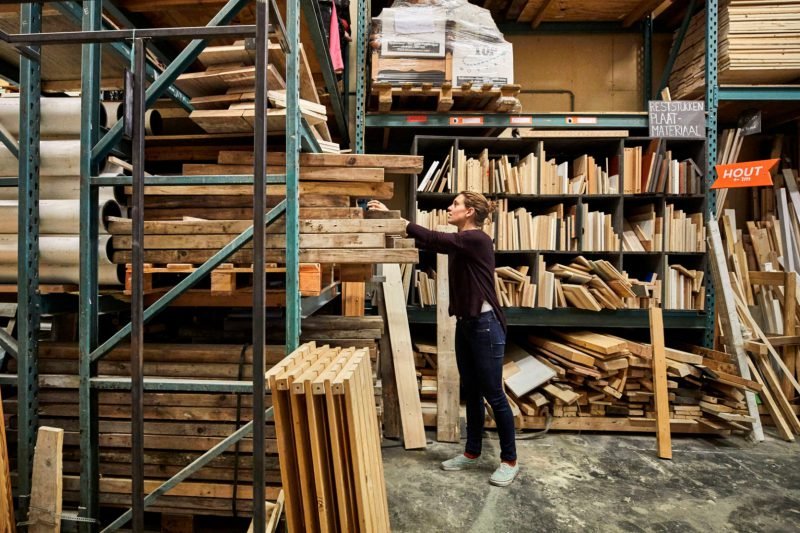DIY Publishing: An Interview With What About It
Last week we featured the new architectural zine SOILED and engaged the editorial team in a discussion on the merits of DIY publishing in the 21st century. This week we take a look at an emerging architectural office/think tank who has recently converted their blog postings into a monograph-zine. What About It is an emerging architectural think tank composed of Nathalie Frankowski and Cruz Garcia. Their work critically dissects the symbolism of contemporary architecture and speaks to a new generation of post-crisis architectural professionals. Their recent self-published WAIzine speaks to the new tactics young professionals are engaging in, in order to establish their own unique voice in the profession.


You run a blog where you publish your projects and essays regularly with very little cost to yourself and the reader. What was the impetus for turning your blog posts into a physical product? What advantages have you found with the zine format versus the blog format? What are you hoping to get out of having the zine publication?
“We think that different mediums of representation or diffusion offer different opportunities and limitations. The blog is somehow inexpensive but it also contains some restrictions. On one hand, the blog offers the great opportunity to receive feedback from the readers in an almost immediate way, and its format allows a very simple and fast use. On the other hand, we are designers and the blog is not very challenging as a design medium; the blog works more like an archive in which we can post articles that we write for magazines after they are published and projects after they are officially presented. Besides, the blog has the inconvenience of being difficult to access from some particular countries. For example in China, where we are based most of the time, the use of BlogSpot is discouraged through some internet firewall, so our website cannot be widely read as we would like it to be read.
A printed product offers a wide array of challenges with the potential of enriching every project while giving us the opportunity to create other medium through which to share our ideas in a more personal format than the blog. The WAIzine enables us to rethink how the projects are presented and to study the relationship that exists between them. With the printed publication enough energy can be spent on deciding representation strategies like layout and edition, allowing us to look at the WAIzine as a cohesive assemblage of projects and ideas. We perceive the WAIzine as a capstone, delimiting a moment in time in the formation of WAI Think Tank, and also as a mean which can be truly representative of how we work.”

Do you have any zines or independent architecture magazines that you find particularly influential? Models for aspiration? Conversely, was there a kind of architecture magazine style that you wanted to avoid?
“We always have in mind the figure of Le Corbusier as a ‘media architect’, in the sense that he knew the potential of printed press and mass media to develop and present his ideas. The series of publications that he started before the 1920’s and that heavily intensified after the publication of Vers une Architecture in 1923 play an important role on the way we perceive the dialectics of architectural representation and media. The influence of Le Corbusier as a public intellectual is in great due to his prolific amount of written and published work, and even organizations as important for the development of international architecture as the CIAM or the Team X, etc. relied greatly on a culture of publications that he harvested. We also acknowledge how during critical times young groups of artists, intellectuals, and architects manifested their ideas through self-made publications (DADA, Archigram and Japanese Metabolists just to name a few).
In contemporary times the fanzines have played an active role to express personal or collective views through almost ephemeral publications. More related to architecture, we had the opportunity to see and experience the development of independent publications such as Monu (Magazine on Urbanism, Rotterdam) that metamorphosed from almost underground magazines, to widely displayed and discussed dossiers. In the same line publications like Conditions Magazine play an important part by giving a voice to young and upcoming practitioners and intellectuals in front of a broad public. These magazines seem to share the will of breaking the status quo of some academic magazines that have become throughout the years a shelter for protected household names and redundant ideas.
For the WAIzine (as with the work of WAI Think Tank), what we wanted to avoid was any kind of commercial deviation and any article or project empty of content or substance. We strive to present WAI to the reader in a meaningful way and in that direction distant ourselves from publicity stunts or generic publications. Even when while several of our projects respond to call for submissions from other magazines and programs from commissions, exhibitions, or competitions, we still aim at producing projects that can be considered groundbreaking in their scope or through their objects of study. We try to answer (other people’s) questions while still being able to pose our own inquiries (therefore the constant interrogation ‘What About It?’).”

What’s your communication strategy? How are you distributing your magazine?
“We decided to take advantage of the upcoming second anniversary of WAI to release the first self-produced publication with the works of the Think Tank. Because WAI is basically an underground enterprise and since we didn’t have any special external funding for the project, we had complete freedom of managing, producing and distributing the magazine. In addition, our geographical situation contributed to increase the challenge: since 90% of our contacts were outside of China, the WAIzine would have imminently to become an international publication.
The first step was to contact people we knew and offer a limited edition copy of the WAIzine to be released for the Chinese New Year celebrations (in the beginning of February 2011.) After receiving several enthusiastic responses, we proceeded to ship the 50 numbered copies of the WAIzine from Beijing to 14 countries within Asia, North, Central and South America, and Europe in three weeks.
After the magazines were delivered a digital version of the WAIzine was uploaded on the internet, reaching more than 500 readers during its first week. The digital version of the WAIzine exponentially widens the diffusion reach of the magazine, and exploits the potential of it as both, a collector’s item, and a free tool for the exchange of ideas. We believe that knowledge should be easily accessible. The only profit we got out of the WAIzine is the diffusion of ideas and the initiation of discussions. (A digital version of the magazine is freely available here.)”

What are your plans for future WAIzines?
“The only pressure we have right now is the one we impose on ourselves. The next issue will appear when we consider having enough material to produce another dense and complete magazine that is as meaningful as the first WAIzine is for us. Currently we are working on several research and architectural projects, so while the work piles up we can already start dreaming about the second part of the WAIzine.”



